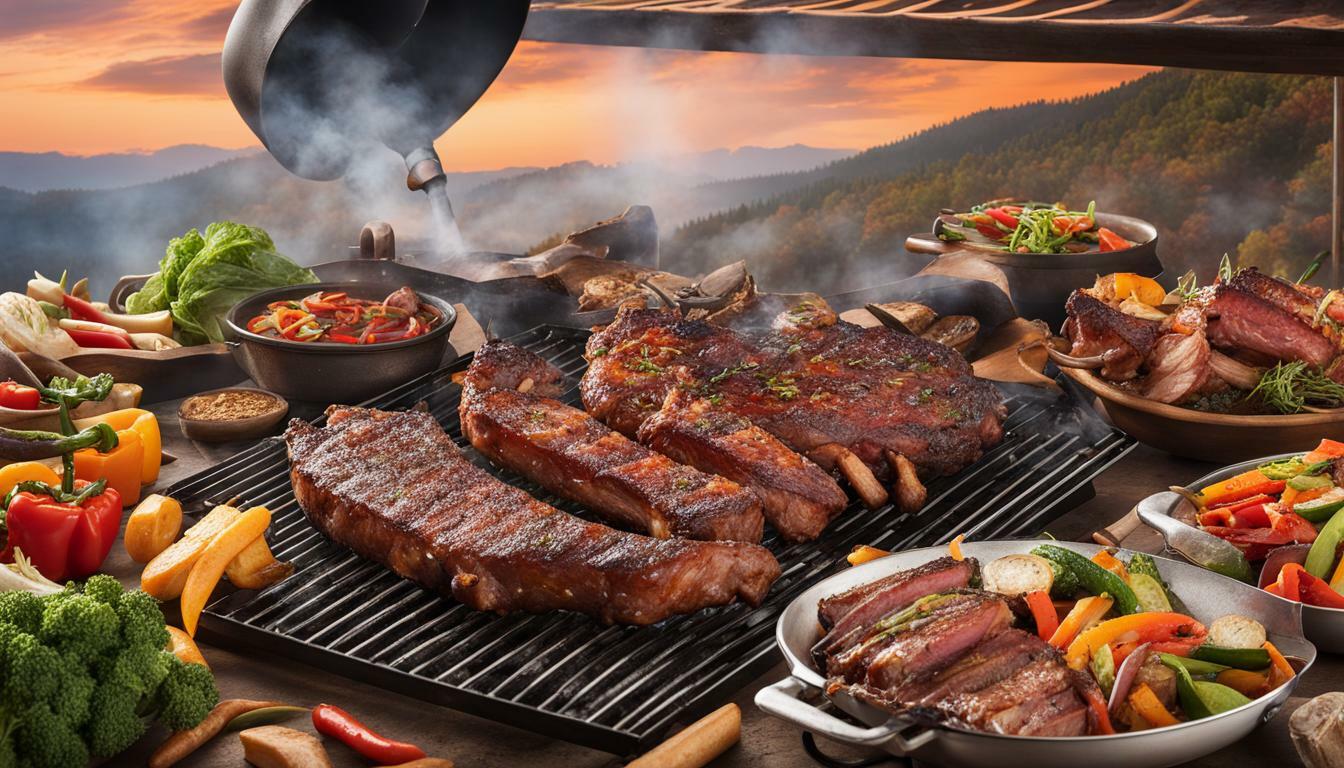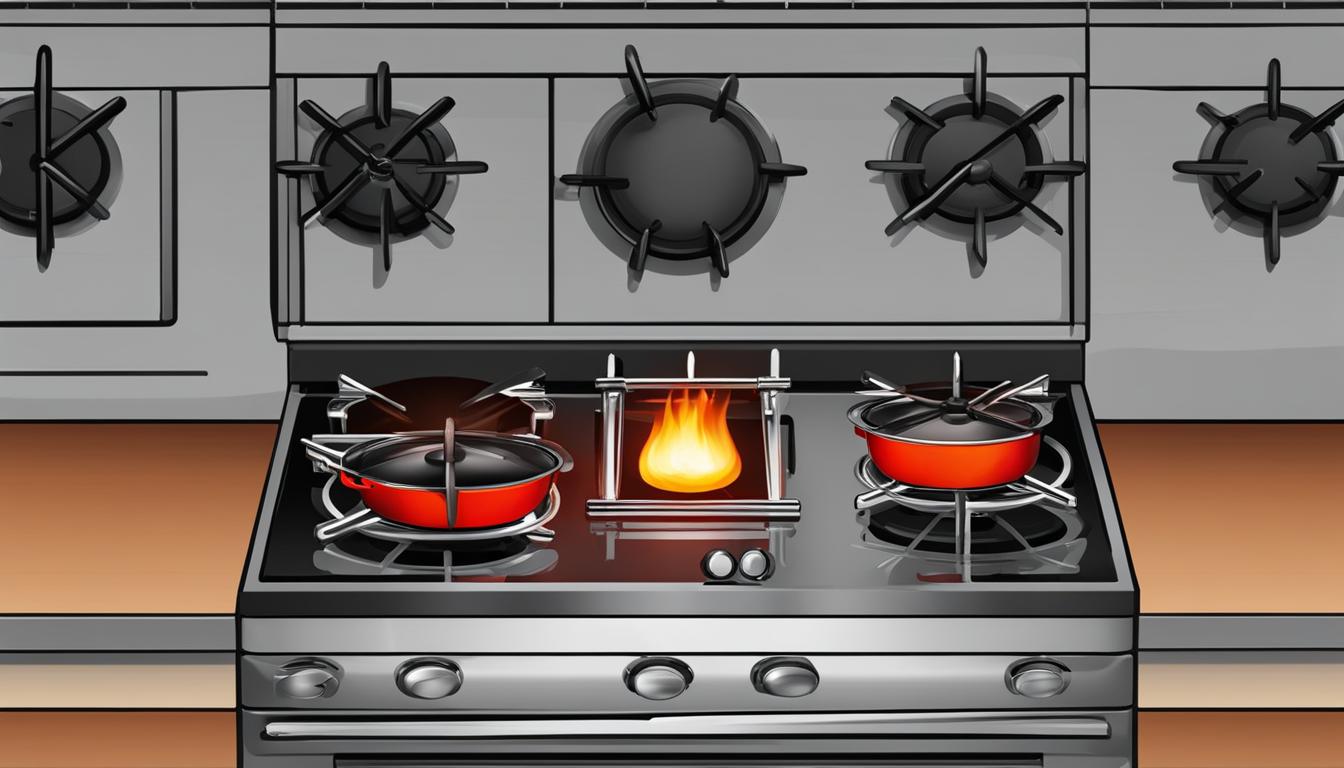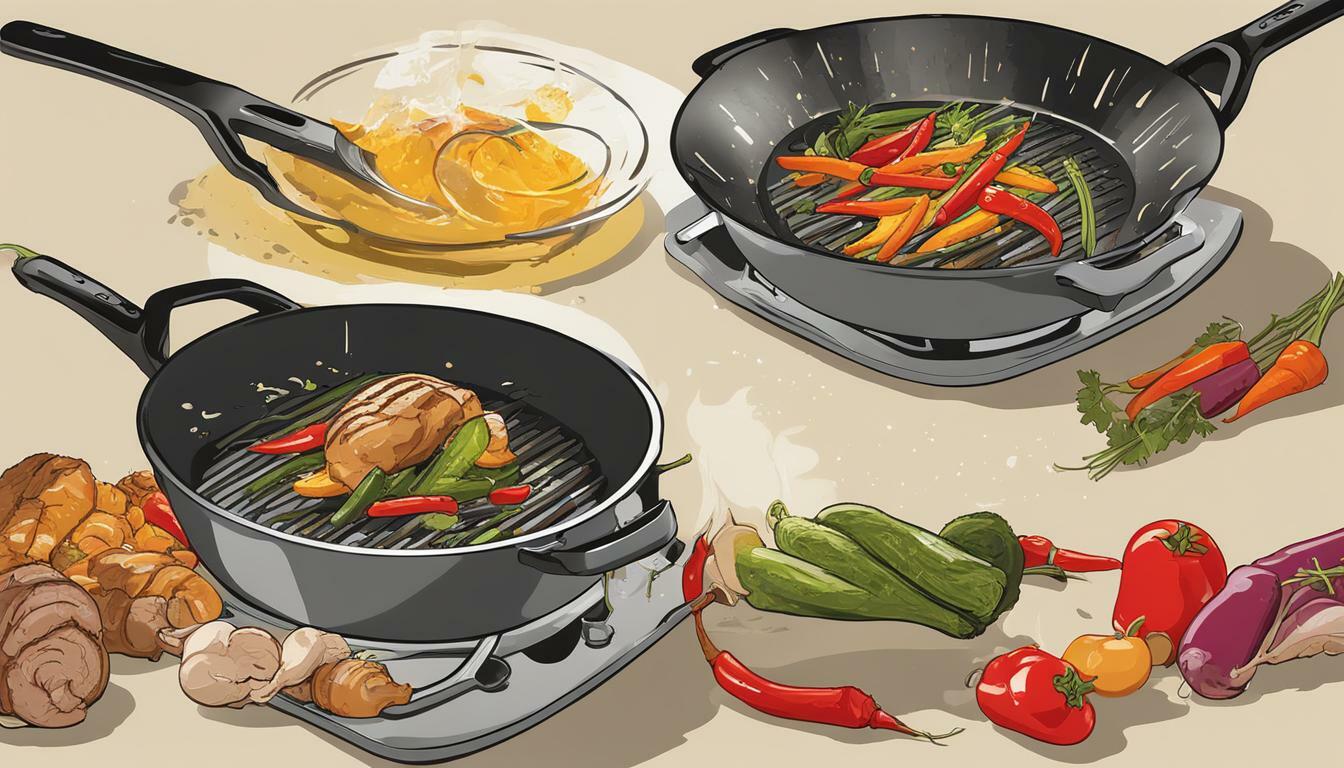When it comes to cooking, there are different techniques that can be used to achieve different results. Caramelizing and sautéing are two of the more common techniques used in the kitchen, but what exactly is the difference between the two?
Caramelizing involves cooking food, typically sugars, until they turn golden brown, resulting in a sweet and nutty flavor. Sautéing involves cooking food in a small amount of oil or butter over high heat, resulting in a crispy and flavorful dish.
While both techniques involve cooking food over heat, the differences lie in the ingredients used, the heat level, and the cooking time.
Key Takeaways
- Caramelizing involves cooking food, typically sugars, until they turn golden brown, resulting in a sweet and nutty flavor.
- Sautéing involves cooking food in a small amount of oil or butter over high heat, resulting in a crispy and flavorful dish.
- The differences between the two techniques lie in the ingredients used, the heat level, and the cooking time.
Caramelizing Versus Sautéing: Techniques and Results
Now that we understand the difference between caramelizing and sautéing let’s take a closer look at the techniques used in each method, and how they affect the final result.
| Caramelizing | Sautéing |
|---|---|
| Cooking Time: Caramelizing takes longer than sautéing as the sugar needs to break down and caramelize. | Cooking Time: Sautéing is known for being a quick cooking method, with most dishes taking only a few minutes to prepare. |
| Temperature: Caramelizing requires low to medium heat to avoid burning the sugar. | Temperature: Sautéing requires high heat to quickly cook and brown the ingredients. |
| Technique: Caramelizing involves adding sugar to a pan and slowly cooking it until it turns a rich, golden brown color. | Technique: Sautéing involves quickly cooking small, chopped ingredients in a hot pan while stirring constantly. |
Caramelizing Versus Sautéing: Techniques and Results
Caramelizing provides a sweet, rich flavor often used in desserts, while sautéing offers a more savory flavor. Caramelizing also creates a beautiful, golden-brown color on the food, while sautéing creates a crispy, browned texture.
However, both methods require a certain level of skill and attention to detail. Caramelizing sugar needs constant monitoring to avoid burning, while sautéing requires proper heat control and constant stirring to avoid overcooking or burning the ingredients.
When deciding which method to use, consider the desired flavor and texture outcome of your dish. If you want a sweet, rich flavor with a golden-brown color, caramelizing is probably your best bet. For a savory, crispy texture, sautéing is the way to go.
Caramelizing Onions and Sautéing Vegetables: A Flavorful Comparison
When it comes to enhancing the flavors of onions and vegetables, caramelizing and sautéing are two popular methods. Caramelizing onions involves cooking them slowly over low heat until they turn a deep brown color, while sautéing vegetables involves quickly cooking them in a hot pan with some oil or butter.
Both methods can add a rich, complex flavor to dishes, but they have different results. Caramelizing onions produces a sweet, deep flavor with a slightly sticky texture, while sautéing vegetables retains their crispness and natural flavor.
Caramelizing onions is perfect for adding depth and richness to dishes like French onion soup, pasta sauces, and dips. On the other hand, sautéing vegetables is great for stir-fry dishes, fajitas, or tacos where you want to preserve the natural taste and texture of the vegetables.
| Caramelizing Onions | Sautéing Vegetables |
|---|---|
| Requires low heat and a longer cooking time | Requires high heat and a shorter cooking time |
| Onions become brown and sticky | Vegetables remain crisp and colorful |
| Deep, sweet flavor | Natural flavor and crisp texture |
Overall, both caramelizing and sautéing are great techniques to enhance the flavor of your dishes. It all depends on what you want to achieve with your dish.
Caramelizing Sugar and Sautéing versus Frying: Sweet and Savory Contrasts
While both caramelizing and sautéing involve cooking food with heat, the results and techniques involved can be quite different. One such contrast lies in the art of caramelizing sugar versus sautéing and frying food, particularly when it comes to adding sweetness and depth of flavor to dishes.
When caramelizing sugar, the goal is to melt and brown the sugar until it becomes a rich, amber-colored syrup that adds complexity and sweetness to many desserts and savory dishes. This process requires slow heating and constant stirring to prevent burning, but the result is worth it. Caramelized sugar can be used immediately or stored for later use as a flavorful and versatile ingredient for adding richness and depth to dishes.
On the other hand, sautéing and frying are common techniques used for cooking savory dishes, such as meats and vegetables. Sautéing involves cooking small pieces of food over high heat in a small amount of oil or butter, whereas frying involves cooking food in hot oil until it becomes crispy and golden. While these techniques do not add sweetness to dishes, they can still create delicious and satisfying flavors and textures.
| Caramelizing Sugar | Sautéing and Frying |
|---|---|
| Goal: to melt and brown sugar into amber-colored syrup | Goal: to cook food over high heat in oil or butter (sautéing) or in hot oil (frying) |
| Result: adds complexity and sweetness to dishes | Result: creates delicious and satisfying flavors and textures |
| Technique: slow heating and constant stirring | Technique: high heat cooking in oil or butter |
While both caramelizing sugar and sautéing/frying can create delicious and flavorful dishes, the techniques and results are quite different. It’s important to choose the right technique for the specific dish you’re making in order to achieve the desired outcome.
Next, we’ll explore practical tips for caramelizing and sautéing, as well as some common mistakes to avoid.
How to Caramelize and Sauté: Tips and Techniques
Caramelizing and sautéing are both essential cooking techniques that every aspiring chef should learn. Both techniques can enhance the flavor and texture of your dishes, but they require different methods and skills.
How to Caramelize Food
Caramelizing is the process of cooking sugar or other carbohydrates until they turn brown and develop a rich, nutty flavor. This technique can be used to caramelize onions, sugar, or other foods. Here are some tips for perfect caramelization:
- Use a heavy-bottomed pan to distribute heat evenly.
- Heat the pan over low-medium heat and add the sugar or other food to be caramelized.
- Stir occasionally until the sugar begins to melt and turn golden brown.
- Be patient and do not rush the process. It can take up to 20 minutes for the sugar to fully caramelize.
- Add a bit of water or cream to stop the cooking process and create a sauce.
How to Sauté Food
Sautéing involves cooking food at a high temperature in a shallow pan with a small amount of oil or fat. This technique is perfect for cooking vegetables, meats, and seafood quickly and efficiently. Here are some tips for sautéing your food to perfection:
- Choose a pan that is large enough to fit your food in a single layer.
- Heat the pan over medium-high heat and add a small amount of oil or fat.
- Add your food to the pan and cook quickly, stirring frequently, until it is lightly browned and crispy.
- Do not overcrowd the pan as it can reduce the temperature and make the food steamed rather than sautéed.
- Season with salt and pepper to taste.
Caramelizing Techniques
There are different techniques and methods that you can use for caramelizing and sautéing different foods. Here are some of the most popular methods:
| Caramelizing | Sautéing |
|---|---|
| Dry caramelization: cooking sugar without any added liquid | Stir-frying: sautéing food quickly in a wok or similar pan |
| Wet caramelization: cooking sugar with added water or other liquid | Butter sautéing: using butter to add flavor to your sautéed dishes |
| Oven caramelization: baking food with sugar to create a crispy crust | Deep-frying: frying food in hot oil until crispy and golden brown |
With these tips and techniques, you can become a master of caramelizing and sautéing your food to perfection. Practice makes perfect, so don’t be afraid to experiment with different flavors and ingredients to find what works best for you.
Conclusion
Whether you’re caramelizing or sautéing, each technique has its own unique qualities and can elevate the flavor of your dishes in different ways. Caramelizing brings out the natural sweetness of ingredients, while sautéing can add a depth of flavor and a crispy texture.
Understanding the differences between caramelizing and sautéing, as well as the various techniques and tools involved, can help you become a more versatile cook and create more flavorful dishes.
So next time you’re in the kitchen, whether you’re looking to caramelize onions for a rich soup or sauté vegetables for a quick stir-fry, keep in mind the differences and experiment with the various techniques until you find the perfect flavor and texture for your dish. Happy cooking!



